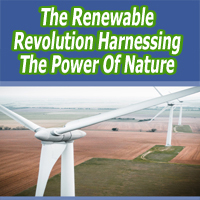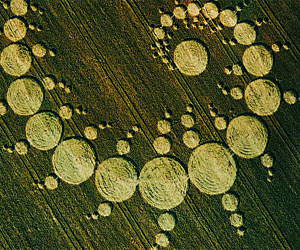



The concept of a carbon footprint has gained increasing recognition as the world grapples with the urgent need to combat climate change. A carbon footprint represents the total greenhouse gas emissions, primarily carbon dioxide, directly or indirectly associated with an individual, organization, event, or product. In this article, we explore the significance of carbon footprint reduction and the actions individuals and businesses can take to minimize their environmental impact.
Understanding The Carbon Footprint: Carbon footprints encompass a wide range of activities and practices that contribute to the release of greenhouse gases into the atmosphere. These include transportation, energy consumption, industrial processes, food production, and more. The resulting emissions trap heat in the Earth's atmosphere, leading to global warming and its associated consequences, such as extreme weather events, sea-level rise, and habitat loss.
The Importance Of Carbon Footprint Reduction:
Reducing one's carbon footprint is essential for several reasons:
Mitigating Climate Change: By decreasing greenhouse gas emissions, carbon footprint reduction plays a pivotal role in slowing down the rate of global warming and mitigating climate change. It is a collective effort to minimize the catastrophic consequences of a changing climate.
Environmental Conservation: A smaller carbon footprint helps protect natural ecosystems, reducing habitat destruction, and preserving biodiversity. This is vital for the health of the planet's diverse flora and fauna.
Resource Conservation: Many of the activities that contribute to carbon footprints, such as energy consumption and waste generation, also deplete finite resources. Reducing these activities helps conserve resources like water and fossil fuels.
Key Strategies For Carbon Footprint Reduction:
Energy Efficiency: Improving energy efficiency is a fundamental step in reducing one's carbon footprint. This can be achieved through actions like using energy-efficient appliances, insulating homes, and optimizing heating and cooling systems.
Renewable Energy: Transitioning to clean, renewable energy sources like solar and wind power significantly reduces carbon emissions. Installing solar panels on homes and businesses is an increasingly accessible option.
Sustainable Transportation: Using public transportation, carpooling, biking, walking, or driving fuel-efficient or electric vehicles all contribute to reduced emissions from the transportation sector.
Waste Reduction: Minimizing waste production through recycling and composting reduces the emissions associated with waste disposal in landfills.
Low-Carbon Diet: Adopting a diet that includes more plant-based foods and less meat, particularly beef, can lower the carbon footprint of food consumption.
Conservation: Conserving water and reducing consumption of water-intensive products, like meat and certain crops, contributes to a smaller carbon footprint, as energy is used in the production and transport of water.
Green Consumer Choices: Choosing products with lower carbon footprints and supporting environmentally conscious businesses can help drive demand for sustainable practices.
Carbon Offset Programs: For emissions that are challenging to eliminate completely, carbon offset programs offer a way to invest in projects that reduce or capture an equivalent amount of carbon elsewhere. These projects may include reforestation efforts, renewable energy installations, or methane capture from landfills.
The Path To A Sustainable Future: Reducing one's carbon footprint is not only an individual or business choice; it's a commitment to a sustainable, environmentally responsible future. It involves a collective effort to address climate change and protect our planet's natural resources and ecosystems.
Carbon footprint reduction is an imperative response to the climate crisis. By taking meaningful steps to minimize our emissions, we contribute to a more sustainable and environmentally conscious world. Individual actions, when multiplied across communities, businesses, and nations, have the power to drive substantial change and create a healthier, more resilient planet for future generations.
Hypnosis For Weight Loss
 Here's how hypnosis can play a role in the weight loss journey:
Here's how hypnosis can play a role in the weight loss journey:
Addressing Emotional Eating: Many individuals turn to food as a way to cope with stress, anxiety, or other emotional triggers. Hypnotherapy can assist individuals in recognizing and dealing with these emotional drivers, helping them find healthier ways to manage their feelings.
Changing Eating Habits: Hypnotherapy can promote a shift in eating habits by reducing cravings for unhealthy foods and promoting a desire for nutritious options. Individuals undergoing weight loss hypnotherapy may find themselves naturally gravitating toward more balanced and wholesome choices.
Enhancing Motivation: Weight loss often requires a high level of motivation and commitment. Hypnotherapy can bolster an individual's motivation to exercise regularly and stick to a healthy eating plan, making it easier to achieve and maintain weight loss goals.
Overcoming Plateaus: Weight loss journeys can sometimes reach plateaus, where progress stalls. Hypnotherapy can help individuals push through these plateaus by reinforcing their commitment to change and addressing any psychological barriers that may be holding them back.




Paving The Path To A Sustainable Future
 3. Carbon Pricing And Taxes
3. Carbon Pricing And Taxes
Carbon pricing mechanisms, such as carbon taxes and cap-and-trade systems, place a price on carbon emissions. By making carbon-intensive activities more expensive, these policies encourage individuals and businesses to reduce their carbon footprint. This, in turn, motivates a shift away from fossil fuel consumption.
4. Electrification Of Transportation
The electrification of transportation is another key strategy for reducing fossil fuel usage. Electric vehicles (EVs) are becoming increasingly popular as their technology improves and charging infrastructure expands. Shifting from gasoline and diesel-powered vehicles to EVs helps decrease the demand for fossil fuels in the transportation sector.
5. Investments In Public Transportation
Investments in public transportation systems can also contribute to fossil fuel reduction. Well-developed public transit networks make it easier for people to rely less on personal vehicles, thus decreasing the demand for gasoline and diesel fuels.
6. Sustainable Land Use And Urban Planning
Sustainable land use and urban planning focus on designing cities and communities that reduce the need for long commutes and encourage walking, biking, or the use of public transportation. This approach lowers fossil fuel consumption associated with daily commuting.
7. Research And Development
Investing in research and development is critical for the creation of cleaner and more efficient technologies. This includes innovations in energy storage, carbon capture and storage, and new methods of renewable energy production.
Challenges And Considerations
While the transition away from fossil fuels is vital, it is not without challenges. Resistance from fossil fuel industries, economic implications, and the need for significant infrastructure changes are among the hurdles that must be addressed. Furthermore, transitioning to alternative energy sources requires careful planning and a commitment to a sustainable future.
The Art Of Dream Interpretation
 Symbols In Dreams: Dreams often manifest as a collage of symbols, each with its unique significance. Common dream symbols may include animals, objects, people, and landscapes. Interpretation involves associating these symbols with their emotional and psychological connotations.
Symbols In Dreams: Dreams often manifest as a collage of symbols, each with its unique significance. Common dream symbols may include animals, objects, people, and landscapes. Interpretation involves associating these symbols with their emotional and psychological connotations.
Emotions In Dreams: Emotions play a crucial role in dream interpretation. The feelings experienced within a dream can reveal the dreamer's emotional state, unresolved conflicts, or desires. Analyzing the emotional content of dreams can be a key to self-awareness.
Freudian Interpretation: Sigmund Freud, the father of psychoanalysis, proposed that dreams are a window into the unconscious mind. He believed that dream symbols often represent hidden desires and unresolved conflicts. Freudian dream interpretation is centered on the idea of wish fulfillment.
Jungian Interpretation: Carl Jung, another influential psychologist, introduced the concept of archetypes into dream interpretation. Jung believed that dreams reflect universal themes and symbols. Jungian dream analysis involves exploring the collective unconscious and personal symbols.
Cultural And Personal Context: Dream interpretation is deeply influenced by cultural and personal context. What a symbol means to one person may vary significantly from its interpretation in another culture or for a different individual.






 Unwavering Loyalty: One of the defining features of dog companionship is the unwavering loyalty dogs offer to their human counterparts. Dogs are known for their unbreakable devotion and the deep sense of trust they place in their owners. This loyalty creates a bond built on a foundation of mutual respect and love, a connection that can weather the storms of life.
Unwavering Loyalty: One of the defining features of dog companionship is the unwavering loyalty dogs offer to their human counterparts. Dogs are known for their unbreakable devotion and the deep sense of trust they place in their owners. This loyalty creates a bond built on a foundation of mutual respect and love, a connection that can weather the storms of life.
A Source Of Comfort: Dogs are often our go-to source of comfort in times of distress. Whether we're facing a challenging day or coping with life's ups and downs, the presence of a dog can be remarkably soothing. They have an innate ability to sense our emotions, offering a paw, a snuggle, or simply their presence to provide solace.
Reducing Stress And Anxiety: Studies have shown that dog companionship can have a profound impact on our mental well-being. The act of petting a dog can trigger the release of oxytocin, the "love hormone," which helps reduce stress and anxiety. Having a dog by your side can make even the most hectic days feel more manageable.
Promoting An Active Lifestyle: Dogs are natural exercise partners. Their energy and enthusiasm encourage their owners to get outside, go for walks, and engage in physical activities. This not only benefits the physical health of both dog and owner but also promotes an active and healthy lifestyle.
A Sense Of Purpose: Caring for a dog provides a sense of purpose and responsibility. Being entrusted with the well-being of a living creature fosters personal growth and a greater sense of accountability. This is particularly important for individuals who live alone or may be experiencing a sense of isolation.
Enhancing Social Connections: Dog companionship can be a bridge to social interactions. Whether at the dog park or during neighborhood walks, dogs have a way of breaking the ice and facilitating connections with fellow dog lovers. The shared love for our canine friends can lead to the formation of lasting friendships.
Unraveling The Mysteries With Critical Inquiry
 Elaborate Hoaxes And Pranks
Elaborate Hoaxes And Pranks
One of the most prevalent forms of skepticism surrounding crop circles centers on the idea that the majority of these formations are elaborate hoaxes and pranks carried out by individuals or groups. Over the years, there have been numerous instances where the creators of crop circles have come forward, admitting to using simple tools, such as boards and ropes, to craft their designs under the cover of darkness. This revelation has reinforced the belief that human artistry, rather than otherworldly forces, is responsible for most crop circles.
Inconsistent Witness Testimony
Another factor that contributes to skepticism is the inconsistency in witness testimony regarding the creation of crop circles. While some witnesses claim to have seen inexplicable lights or experienced unusual phenomena near the formations, others maintain that they saw no such occurrences. These inconsistencies raise questions about the reliability of eyewitness accounts and their correlation to the paranormal.
Lack Of Concrete Evidence
Skeptics argue that despite decades of crop circle observations, there is a notable absence of concrete, irrefutable evidence linking these formations to extraterrestrial activity or unexplained natural phenomena. They emphasize the need for empirical evidence, such as samples of crop circle materials with extraordinary properties, which could help substantiate the paranormal claims. The lack of such evidence, according to skeptics, weakens the case for otherworldly involvement.
Natural Explanations
Many skeptics point to well-documented natural explanations for crop circles as evidence against paranormal theories. These natural processes include meteorological phenomena like whirlwinds, wind patterns, and plant physiology.